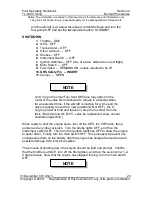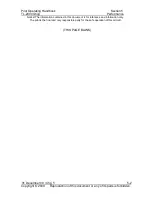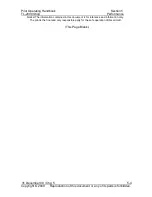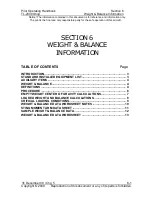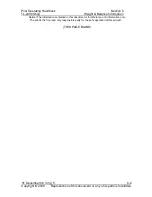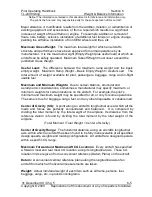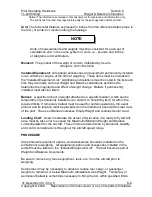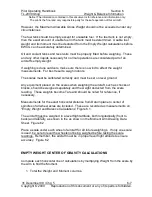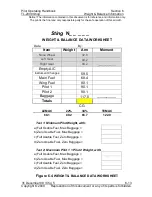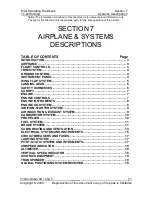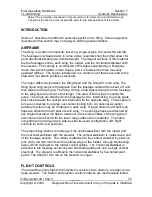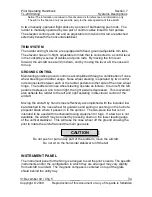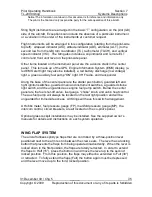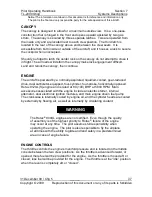
Pilot Operating Handbook
Section 6
TL-2000
Sting
Weight & Balance Information
Notice! The information contained in this document is for reference and information only.
The pilot is the final and only responsible party for the safe operation of this aircraft.
31 December 09 / Chg 5
6-7
Copyright © 2009 Reproduction of this document or any of its parts is forbidden.
However, the Maximum Allowable Gross Weight should not be exceeded under any
circumstances
The fuel tank should be empty except for unusable fuel. If the fuel tank is not empty,
then the exact amount of usable fuel in the tank must be determined. Usable fuel
weight and its moment must be deducted from the Empty Weight calculations before
EWCG can be accurately determined.
Oil and coolant tanks and reservoirs must be properly filled before weighing. These
and any other liquids necessary for normal operations are considered part of an
aircraft’s empty weight.
If weighing is done outdoors, make sure there is no wind to affect the weight
measurements. For best results, weigh indoors.
The scales must be calibrated correctly and must be set on level ground.
Any equipment placed on the scales when weighing the aircraft, such as chocks or
blocks, should be weighed separately and the weight deducted from the scale
reading. These weights become Tare and should be noted for reference, if
necessary.
Measurements for the exact horizontal distance from Datum plane to center of
spindles of all wheel axles are included. These are recorded as measurements on
“Empty Weight and Balance Calculations” Figure 6.1.
The aircraft must be weighed in a level flight attitude, both longitudinally (front to
back) and laterally, as shown in the as shown in the Moment Arm Drawing Data
Sheet. Figure 6.2
Place a scale under each wheel of aircraft for all future weighings. If only one scale
is used, be sure to level the wheels not being weighed before taking the scale
readings. Remember, the aircraft must be in proper level flight attitude to ensure
accuracy. Figure 6.2
EMPTY WEIGHT CENTER OF GRAVITY CALCULATIONS
Complete each horizontal line of calculations by multiplying Weight from the scale by
the Arm to find the Moment.
1. Total the Weight and Moment columns.



